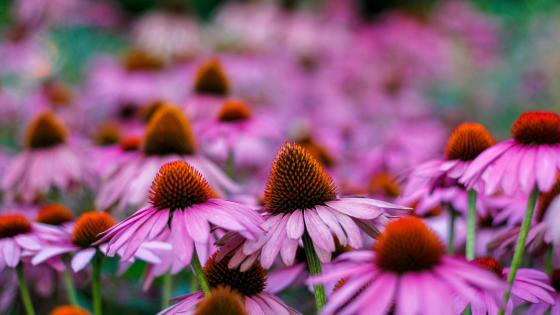
Echinacea
Echinacea
Coneflowers (Echinacea spp.) are herbaceous perennials with large daisy-like flowers. There are nine species of coneflower and all are native to central or eastern North America. Purple coneflower (E. purpurea), well-known garden flower, is extensively cultivated in nurseries. This hardy ornamental is commonly planted in both home and commercial landscapes. Coneflowers are also effective, long-lasting cut flowers.
Some species are also prized commercially for their reported medicinal properties. Echinacea has been used as an immune system stimulant, an anti-inflammatory, and as an aid in healing wounds. While dried roots are most desirable in commercial medicinal preparations, the flowers, leaves and seeds have also been harvested.
Key Requirements
| Land | Low to Medium |
| Labor | High |
| Capital | Medium |
Take the HortBizQuiz to see how much Land, Labor, and Capital you have for your operation.
Markets
- Garden Centers
- Florists
Pests & Disease
Weeds are the greatest threat to field production. Echinacea is a poor competitor with other plants, thus weed management is critical, especially during the first year. Disease with potential to cause serious crop losses include aster yellows and Sclerotinia crown and stem rot.
Costs and returns are presented as estimates. They will vary based on your farm and markets.
Costs and returns are presented as estimates. They will vary based on your farm and markets.
Challenges
- Seed germination in Echinacea species can be difficult, so direct field-seeding crops do not usually result in adequate crop stands.
- The level of management for container-grown nursery plants is significantly higher than in field production.
Opportunities
- Producers could enter wholesale markets selling to retail garden centers and other retailers, as well as wholesaling to nurserymen, landscapers, and possibly landscape nurseries.
- Echinacea plants can be field-grown for herbal or ornamental use, or container-grown for ornamental use.